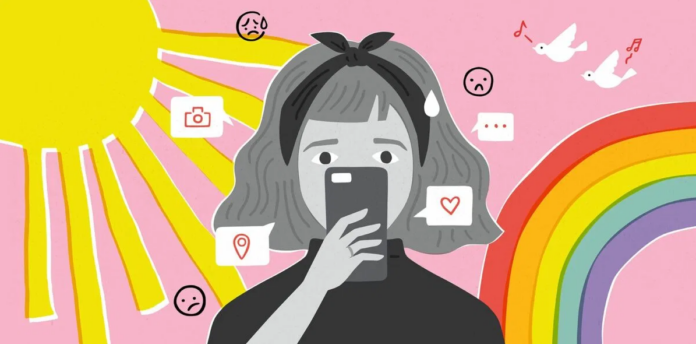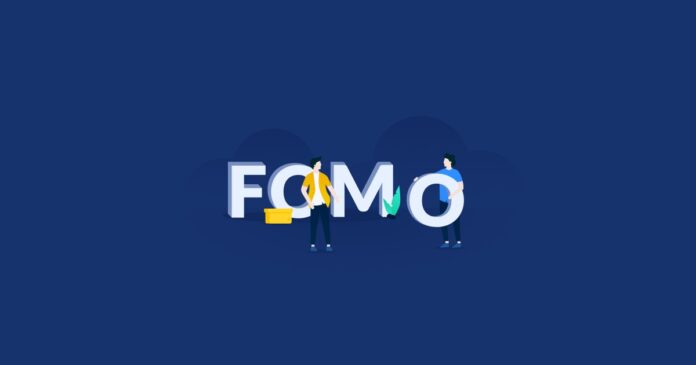Are you familiar with the fear of missing out (FOMO), the first-world problem that seems to affect heavy social media users? If so, then you are also familiar with an immensely popular marketing tool among companies that offer digital marketing services. Digital marketers utilize FOMO to build brand awareness, create qualified leads, and drive sales.
The phrase ‘fear of missing out‘ was coined by a marketing strategist back in the mid-1990s. Dr. Dan Herman came up with it after studying consumer habits and short-term brands. Herman described FOMO as a response to marketing messages based on one’s desire to keep up with everyone else.
What we call FOMO our grandparents referred to as ‘keeping up with the Joneses’. But there is a difference in 2024: digital and online technologies expand our world far beyond immediate friends and neighbors. We can now see what people are doing all over the world. That’s what makes FOMO so powerful.

Interesting FOMO Statistics
Research shows that millennials are more likely to experience FOMO than other age groups. Some 69% of them are affected. Not only that, approximately 40% of them report spending more than they should just to keep up with their friends.
Based on these two statistics, it is reasonable to assume that using FOMO to market can be both good and bad. It’s never good to encourage people to get into debt just to buy your products or services. On the other hand, the FOMO phenomenon creates a very fertile customer base.
Is FOMO among your marketing strategies? If not, here are a few more statistics to consider:
- 72% of FOMO experiences occur on Facebook
- 60% of millennials report making purchases because of FOMO
- 59% of FOMO experiences are related to travel; 56% are related to parties and events
- 56% of all adults report being afraid they will miss out if they don’t keep up on social media.
One could make the case that social media has fueled the FOMO phenomenon. From Facebook to Twitter, people seem to be constantly checking their social feeds just to see what’s going on. How many times a day do you check yours?
FOMO As a Marketing Tool
So, how can digital marketers use the phenomenon to reach customers? The best way, at least according to Salt Lake City’s Webtek Digital Marketing, is to make use of social media marketing. If social media is where most consumers experience FOMO, that is the place to work it.
Experts say that FOMO can be leveraged as a marketing tool without always trying to sell something. In fact, this is true of all digital marketing services. Not every marketing message needs to be a sales pitch. Not every message should be. There is a place for building brand awareness and encouraging customer loyalty without actually selling things.
Here are some basic tips:
- Keep social media posts short and positive.
- Include relevant information users can like and share.
- Encourage followers to like, share, and repost.
- Utilize images that will convey the message better.
- Link social media posts back to the main website.
The best way to feed FOMO for marketing purposes is to create posts that connect with consumers on a personal level. The stronger the connection, the more likely they are to share that content with others.

User-Generated Content
Leveraging user-generated content (UGC) is a dynamic way to engage customers and create a sense of Fear Of Missing Out (FOMO). Encourage customers to share their experiences with your products or services on social media platforms using specific hashtags.
This not only amplifies your brand’s reach but also showcases real-life examples of satisfied customers. Highlighting such content, especially images or videos of customers happily using your products, can significantly enhance FOMO. It demonstrates to potential customers that others are already enjoying the benefits of your offerings, compelling them to join in.
UGC acts as a powerful, authentic endorsement, as it comes directly from fellow consumers rather than the brand itself.
Limited-Time Offers
Creating time-sensitive promotions and discounts is a highly effective strategy to induce FOMO. Displaying countdown timers on your website or in marketing communications adds a visual cue to the urgency.
Limited-time offers, such as flash sales or exclusive deals ending in a few hours or days, tap into the customer’s fear of missing out on a great deal. This strategy compels customers to make quicker purchase decisions to avoid the regret of missing out.
Such offers not only drive immediate sales but can also increase traffic and engagement with your brand.
Social Proof
Incorporating social proof elements like customer reviews, ratings, and testimonials in your marketing materials can significantly fuel FOMO.
When potential customers see positive feedback and high ratings from previous buyers, it reinforces the notion that others have made a satisfying purchase decision. This kind of social validation can be a powerful motivator for hesitant customers, nudging them towards making a purchase.
Featuring testimonials prominently on your website, in emails, or on social media can effectively demonstrate the value and quality of your products or services, encouraging others to follow suit.

Exclusive Access
Offering exclusive access to certain products, content, or events can be a potent trigger for FOMO. This strategy involves making a portion of your offerings available only to a select group, such as loyal customers, subscribers, or members of a loyalty program.
By highlighting the exclusivity and limited nature of this access, you can create a sense of privilege and urgency among your audience. People naturally desire what is scarce or exclusive, so this approach can significantly boost interest and engagement.
Whether it’s early access to new products, members-only content, or exclusive event invitations, these exclusives create a compelling reason for customers to stay engaged and loyal to your brand.
Storytelling and Narratives
Crafting compelling narratives and storytelling around your brand, products, or services can tap deeply into emotional triggers, thereby increasing FOMO. Share stories that illustrate how customers’ lives have improved or been positively impacted by your offerings.
These stories should evoke emotions and help potential customers envision the benefits they could gain. A well-told story can create a strong emotional connection with your audience, making them feel like they are missing out on significant benefits or experiences.
This method not only enhances product appeal but also helps in building a deeper, more meaningful relationship with your brand. The key is to make these stories relatable, authentic, and emotionally resonant, aligning them with the desires and aspirations of your target audience.

Don’t Miss Out on FOMO
If you own a business and you market online (who doesn’t, these days?) don’t miss out on FOMO and its potential to contribute to sales and brand awareness. Figure out how to use it or hire a digital marketing services company that can do the work for you.





![Calgary’s Hottest Neighborhoods for Luxury Homebuyers [2024]](https://thewashingtonote.com/wp-content/uploads/2024/04/Calgary-324x160.png)



